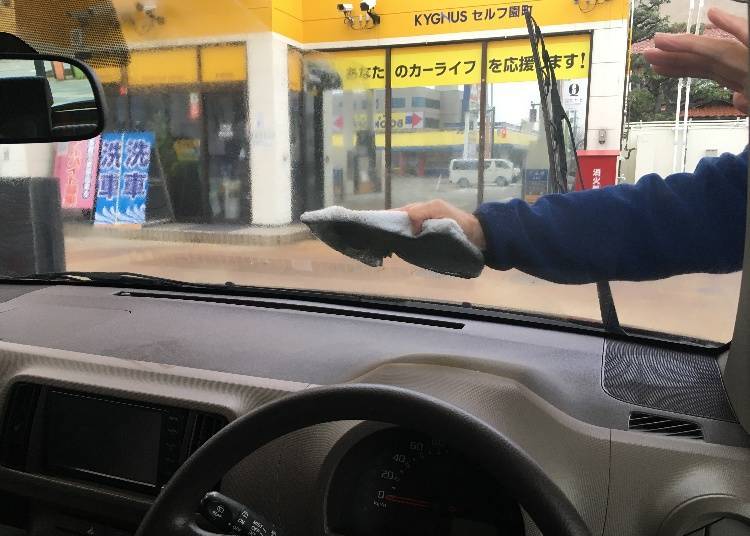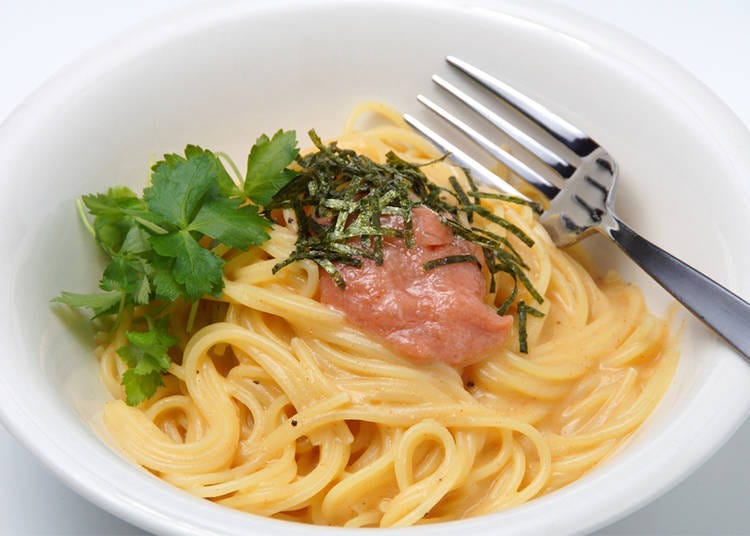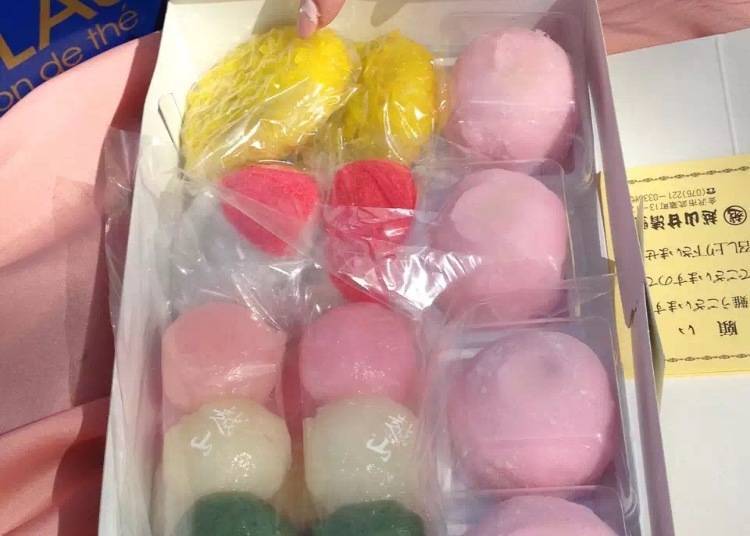
When we think about Japan, all kinds of things pop into our head. From brands such as Toyota and Honda to other futuristic technology such as the Shinkansen bullet train, the colorful world of manga and anime, and dishes loved all around the world, with ramen and sushi being at the forefront.

Indeed, Japan is known for a real kaleidoscope of things both amazing and weird, befitting its status as a global trendsetter. Of course, hand in hand with modern technology and pop culture always goes the historic and traditional. The image of the enigmatically beautiful geisha and the deadly ninja and samurai are just as prevalent as pop culture.
However, when people actually come to Japan, it’s usually not the quirky things that impress them the most, but quality-of-life discoveries hidden in daily life that everyone’s eager to tell their friends and family about. These details and seemingly mundane discoveries are the “real Japan” and we promise you, it’ll leave an even stronger impression than adorable characters and talking toilets.
“Omotenashi” – Mind-Blowing Service in the Spirit of Japanese Hospitality

If you’re curious about Japan, you’ll likely have come across the term omotenashi. It is often translated as “hospitality” and yet seems to mean so much more. The whole concept of omotenashi is centuries old, revolving around the mission to provide one’s guests with every comfort imaginable, including entertainment and going above and beyond to make them feel cared for, catered to, and warmly welcomed.
This concept is especially evident at Japanese restaurants, stores, and hotels, where you’ll generally experience amazing hospitality and said “extra mile” of service. “Japanese people are so friendly,” is something that you often hear from people who traveled to Japan, an impression that is likely always influenced by the country’s unique concept of hospitality.
On top of that, this service culture is reinforced by convenience stores offering basically everything you’d wish for, from postal service to concert tickets and all sorts of other quality-of-life services. Even the design of Japanese products is all about the customer.

Let’s look at some notable examples to give you a better impression of what this hospitality actually looks like. If you buy food at a convenience store, the staff will always ask if you want it warmed up in a microwave, in case you want to eat it right there – in the shop’s eat-in corner, for example. The staff at a bookstore will gladly wrap your purchase in a paper cover, to ensure that your new book stays nice and clean, even if you read it on the go. At gas stations, the staff will clean the front window of your car or throw away any trash you might have with you while you wait for your car to refuel. That is all for free, of course.


Even on mundane everyday items, you’ll find little details that make life just a little bit more comfortable. A nice example of this is Japan’s shampoo and conditioner bottles. Pretty much everyone has an anecdote to tell of how they mistook one for the other in the shower. Japan’s shampoo bottles are designed with notches on the side and the pump on the top, so that you’ll always know which bottle to use even with your eyes closed.


Even something as simple as a tissue box gets a quality-of-life improvement in Japan. At the bottom, you’ll find two extra holes. When there are only few tissues left in the box, it can be a pain to reach them from the top slit. Simply use those bottom holes instead to pull out the last couple of tissues! The boxes are also designed to be easily folded, saving you plenty of room in your trashcan.


Waste separation is rather complex in Japan, with some areas having 20 different categories such as burnable, non-burnable, recyclable, and so on. To make separation at home easier, Japanese plastic bottles are designed to be disassembled with surprising speed and ease.


The bottle itself belongs to the “bottle” category, obviously, while the label and cap are thrown away as “plastic.”
Peace of Mind and Safety Even in Public

Japan has crime like every other country, that is for sure. You’ll find plenty of news on a daily base, and yet you’ll see people sleeping without care in a public train or walking alone at night, even through shadier areas. Especially in rural Japan, you’ll find a lot of stations that are left unattended – you could simply hop over the ticket gates, but rarely anyone does that.
The same goes for vegetable stands that offer you to put money in a box and shop without a clerk and even there, the vast majority of people would never think that leaving one’s wares out like that is dangerous. Japanese society is based on the belief that people do the proper thing and that makes it feel wonderfully safe.

This is an example of an entirely unattended station. Theoretically, there’s no station master that would stop you if you jumped over the ticket gates and rode the train for free.

People pay by holding their IC card to the panel at the entrance or by buying a ticket at the vending machines.
The other day, a member of LIVE JAPAN’s staff lost their wallet and iPhone while on a business trip. Two days later, everything was returned and not a single coin was missing! This phenomenon is one that likely has the most people saying: “Only in Japan!”
Japan’s “Manners:” Consideration Towards Others
Like plenty of other countries, Japan has rules for escalators. In Tokyo, it’s “stand on the left,” while Kyoto and Osaka follow “stand on the right.” The most surprising thing about this escalator etiquette is that it is generally followed to a T even during the rather insane rush hour. It’s fascinating and oddly satisfying to watch, really.

Another thing that tourists notice with astonishment is that no matter how crowded a train gets (and especially in Tokyo, it gets very crowded). it is wonderfully quiet. No one talks on the phone, and even friends generally talk to each other in hushed voices. Beeping or music from mobile phones is also an absolute no-no. Public spaces in Japan stress that phones need to be put in “manner mode,” the Japanese term for silent mode – that term alone makes clear what the purpose of this silence is. Crowded trains aren’t fun at all, so people make an effort to not make them even more unbearable by being quiet and polite. In general, the Japanese modus operandi is “don’t bother others.”

Japanese Punctuality

Let’s stay with trains for a moment and talk about how ridiculously punctual they are. Most of us expect public transportation to be delayed a couple of minutes, that’s just part of how it works, right? Not in Japan, it isn’t! If a train is late even by a minute, you’ll hear an apology via speaker announcement, telling you the precise time on which the train is to be expected. If there’s a delay over five minutes, the transportation company issues a “delay certificate” in the form of a little paper slip and will guide you to alternative routes. This certificate is an easy, stress-free way to show your school or company official proof that your tardiness is in no way your own fault – you don’t even have to ask for it, simply grab it at the ticket gates.

In general, being late is considered as extremely rude in Japan. Especially in a business context, but even among friends, people make an effort to not let others wait. In fact, Japanese people generally try to be five minutes early.
This “5 minutes before” behavior is taught in elementary school. If kids need to move from one classroom to another, they’re encouraged to make all necessary preparations before the bell rings. Of course, this kind of education has a big impact on the punctuality of Japanese people overall.

This focus on being punctual also has a very real influence on services, specifically deliveries. If you order something, you’re able to pick a specific timeframe during which your delivery will arrive. And, of course, it’s virtually never late!

This is a voucher of a delivery company. The circled part is where you choose the time of your delivery. In this example, it’s a 2-hour timeframe.
Keeping Everything Tidy and Clean
Japan is ridiculously clean, with the exception of certain downtown areas on a Saturday morning. Since the terrorist attack that hit the Tokyo subway in 1995, trashcans have all but disappeared from the streets of Japanese cities, as a measure to prevent similar incidents. Nonetheless, you’ll barely see any littering. Instead, the general rule in Japan is to bag your trash, take it home with you, and dispose of it there. In certain areas, volunteer programs also help keep the streets free of any trash.



And here’s a fun anecdote that everyone has heard about: Japanese toilets are high-tech! Indeed, the so-called washlet by TOTO pampers our behind with a heated seat and its sophisticated bidet and cleaning functions, making it famous all across the globe. They can often be found in public toilets at department stores, museums, or event venues, so don’t be shy and press all the buttons!

“Kaizen,” Continuous Improvement and Ridiculously Beautiful Food
When it comes to food, Japanese people put great value on the look of a dish. On top of that, the seasons play a major role in Japanese cuisine. Not only does a dish have to represent a season, it is especially valued if it uses the “first” of a season, such as the first catch or the first fruits. This makes you feel the season through the dish not only on your tongue but also in your mind.
Generally, people want to try a lot of different things, a desire that is the root of kaiseki cuisine. Kaiseki basically is a multi-course meal that serves you numerous little, carefully created dishes, arranged like little pieces of art. It’s all about the balance. You’ll be surprised to find out that the bento, Japan’s famous boxed lunch, is a casual version of the elaborate kaiseki cuisine. They, too, are meant to be made up of all sorts of different, seasonal things that are in perfect balance with one another.



Sushi is established as one of Japan’s most iconic dishes, but the raw fish delicacy is closely tied to the ability to deliver freshly caught seafood via a network that stretches to every corner of Japan. A representative spot of this importance of fresh ingredients is Tokyo’s Tsukiji market, where seasonal ingredients from all over the country can be enjoyed at their freshest. It’s a hot spot for both chefs and tourists. In 2018, the famous market is planned to move to nearby Toyosu, but it is sure to keep its abundance of restaurants that serve you cuisine as fresh as it can be!


Japan has a rich food culture that isn’t just made up of Japanese cuisine but also incorporates dishes and cuisines from all around the world. Like everywhere else, it is adapted to the unique taste of Japan, catering to the local preferences. The results are new takes on classic dishes and often you’ll find a delicious Japanese spin on a dish that you know from your own country!
A concept that is very important here is kaizen, meaning “constant improvement.” Of course, this doesn’t literally mean that a non-Japanese dish is made better in Japan – that is up to everyone’s own taste to decide. Instead, it refers to the practice of taking something and adapting it to the local taste, in terms of flavor, volume of the dish, appearance, and sometimes even includes making something easier to eat.

Ramen is a great example of this. The iconic noodle soup is originally from China but has evolved rather independently in Japan. Nowadays, it’s one of the country’s most representative dishes! There are various different versions of ramen, starting with the broth (pork bone, salt, miso, soy sauce, ...), to the way of eating. Tsukemen, for example, serves you the noodles separate from the soup, and aburasoba doesn’t have any soup at all.
Even outside of Japan, pretty much everyone knows what ramen is and in various countries, there has been a proper ramen boom in recent years. Popular Japanese ramen brands have started expanding internationally, including Ippudo, Santouka, and Ajisen Ramen. Shin-Yokohama even has its own Ramen Museum, a theme park dedicated to the beloved bowl. It unites famous ramen shops from all across Japan, so if you seek your own ramen adventure, it’s an excellent place to start!



Italy’s pasta also offers excellent customization options for a uniquely Japanese twist. Two famous examples are mentaiko spaghetti, incorporating cod roe, as well as Napolitan, pasta made with ketchup, bacon, green peppers, and so on. Both dishes are unique varieties created in Japan. If you’re really daring, we encourage you to go for natto spaghetti.


Japan also offers plenty of creative bread varieties. Among them, yakisoba bread (fried noodles in a hot dog-like bread) is especially popular, as it is sold in many schools as a cheap yet tasty and substantial snack. Other than that, cream bread, curry bread, and anpan (bread with sweet bean paste) are iconic examples of Japanese bread creations. The country tends to put an entire meal or specific ingredients between two buns!

There’s even a fun dish based on Mexico’s well-beloved tacos. It’s called taco rice and takes everything that goes inside a taco, takes away the shell, and instead puts it on rice. It’s surprisingly delicious and might just become a new favorite of yours!

Everyone loves the classic hamburger, but of course Japan also puts its own spin on that as well. This is the rice burger and while it resembles the original, it tastes nothing like it. Between the bun-shaped rice are originally Japanese ingredients, such as teriyaki chicken, local vegetables, and so on. The size also may seem small to some, but it is a wonderfully healthy option that goes well with salads and soups – just the way Japanese people like their meals.
Traditional Culture and its Focus on the Seasons

Japan has four very distinct seasons, a feature that has had a major influence on Japanese culture since centuries. The spring is known for its cherry blossom phenomenon, the hot summer is filled with traditional festivals and fireworks, autumn transforms the country with vivid colors, and winter brings both snow and the real charm of Japan’s many natural hot springs. No matter where you go, you’ll find local culture revolving around the reasons, both with unique festivals and regional cuisine.












February marks the month in which winter changes to spring and an event called “setsubun” is held since ancient times. At its heart is a bean-throwing ceremony, which sounds rather strange at first, but is an old custom to drive out evil and invite good fortune into one’s home. The phrase Oni wa soto! Fuku wa uchi! “Demons Out! Luck in!” On top of that, people eat as many beans as years they’re old.

In May, a festival called Tango no Sekku takes place, also simply known as Children’s Day. Just as its name suggests, it is an old festival to pray for children’s healthy growth and their happiness. Typical for this festival is the kashiwa mochi, filled rice cake wrapped in an oak (kashiwa) leaf. Oak leaves don’t fall off the tree until spring brings new sprouts, so the symbolism behind this sweet treat is that “parents don’t die until a child is born.” It may sound grim now, but it is actually a happy custom that means health and prosperity.


A Japanese New Year’s tradition is to eat buckwheat noodles called toshikoshi soba. The long, slim shape of the noodles symbolizes a long and healthy life. Another dish that is enjoyed during this time is osechi, a meal served in a box of multiple layers (typically three). It originates from the food that was offered to the New Year’s deities in ancient times. There are proper customs about what ingredients to put into each tier of the osechi box each with its own meaning.
Japanese Healthcare and the Voluntary “Hometown Tax”
Last but not least, let’s take a look at Japan’s healthcare – sure, it will be standard to some and great to others, but it’s worth mentioning in any case. Every person living in Japan is required to have public health insurance, either by having an insurance plan via one’s employer or by joining national health insurance. For the latter, you’re required to pay 30% of a treatment, but it covers basically all general services, including dental care. For seniors over 75 years, the rate they have to pay themselves drops to 10%.
Besides that, the amount paid for particularly expensive treatments can be refunded by naming it in the tax refund form at the end of Japan’s fiscal year.

Another interesting aspect in regard to taxes and payments is the furusato nōzei, or “hometown tax.” It’s a voluntary program that allows you to choose a local area, such as city, prefecture, or municipality – you don’t have to live there – and to donate part of your income. Your “tax” will be used for development of the area, such as disaster prevention or social programs. A lot of areas thank the people making use of this hometown tax by sending them gifts of local delicacies. Recently, the number of people signing up for the hometown tax has increased – maybe because it’s such a nice, uncomplicated way to support a place that is close to your heart.



The gifts sent by local areas to people who pay the hometown tax are rather sought-after. Depending on how high your donation is, you get to choose different goods.
Japan – Loving All the Little Things
Sure, we love Japan’s crazy pop culture and fancy gadgets, but what really makes us all warm and fuzzy inside are the many little, endearing details that you can discover in Japanese daily life. Sure, it can feel rather crowded and cramped – Japanese people feel the same. But from this togetherness comes a special mindset of being courteous with each other, and that carries a lot of heartwarming little gestures and customs with it. From wonderful service to ingenious products, it’s the little things that make us fall in love with Japan all over again, all the time.
*Prices and options mentioned are subject to change.
*Unless stated otherwise, all prices include tax.
Popular Tours & Activitiess
Recommended places for you
-

ISHIDAYA Hanare
Yakiniku
Kobe, Sannomiya, Kitano
-

Jukuseiniku-to Namamottsuarera Nikubaru Italian Nikutaria Sannomiya
Izakaya
Kobe, Sannomiya, Kitano
-

Kanzenkoshitsuyakinikutabehodai Gyugyu Paradise Sannomiya
Yakiniku
Kobe, Sannomiya, Kitano
-

Kambei Sannomiyahonten
Yakiniku
Kobe, Sannomiya, Kitano
-
Goods

Yoshida Gennojo-Roho Kyoto Buddhist Altars
Gift Shops
Nijo Castle, Kyoto Imperial Palace
-
Appealing

Rukku and Uohei
Izakaya
Sapporo / Chitose
-

New Seibu L00 Series Launching in 2026! What to See Along the Tokyo-Area Golden Route
by: Guest Contributor
-

The Best Japanese Food Representing 2025! 'Dish of the Year®' Annual Award Results Announced
-

[Extended Offer!](12% OFF KKday Coupon) Mt. Fuji Autumn Leaves, Powder Snow & More! 15 Best Tours to Experience Japan in Fall & Winter
-

Simply Oishii Wagashi School Discover Japanese Culture Through Wagashi: A Hands-On Experience!
by: Guest Contributor
-

How to Get Don Quijote's Exclusive 2025-2026 Winter Gift (+Tax-Free Savings)
-

Keisei × Keikyu 16-Temple Goshuin Tour: Discover Deeper Tokyo & Yokohama
by: Guest Contributor
-

Numazuko Kaisho in Ueno: Good Quality, All-You-Can-Eat Seafood for Just US$12!?
-

Shine Bright This Winter: 15 Must-See Tokyo Illuminations (2025-2026)
by: Kaori Kimura
-

Hakodate 2-Day Itinerary for Exploring Japan's Foodie North!
-

3 Spots for the Best Lunch in Shibuya at Magnet by Shibuya109!
-

3 Famous Ramen Shops in Yamagata - Japan's "Ramen Prefecture"!
-

Tokyo Onsen: Beautify Your Skin at Tokyo's Top 3 Kuroyu Black Hot Springs!
- #best sushi japan
- #what to do in odaiba
- #what to bring to japan
- #new years in tokyo
- #best ramen japan
- #what to buy in ameyoko
- #japanese nail trends
- #things to do japan
- #onsen tattoo friendly tokyo
- #daiso
- #best coffee japan
- #best japanese soft drinks
- #best yakiniku japan
- #japanese fashion culture
- #japanese convenience store snacks












